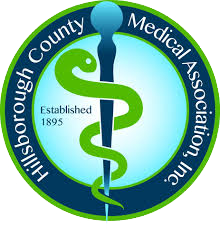 Each of our knees contains two menisci. These rubbery, C-shaped pieces of cartilage help to absorb shocks and cushion the knee joint. When a meniscus is injured, it may produce pain and swelling and cause the knee to buckle or lock. Meniscus injuries are especially common among older individuals, since the menisci can weaken over time, as well as among athletes who frequently collide with other players or perform sudden twisting motions.
Each of our knees contains two menisci. These rubbery, C-shaped pieces of cartilage help to absorb shocks and cushion the knee joint. When a meniscus is injured, it may produce pain and swelling and cause the knee to buckle or lock. Meniscus injuries are especially common among older individuals, since the menisci can weaken over time, as well as among athletes who frequently collide with other players or perform sudden twisting motions.
Below, we explain when meniscus surgery is necessary. We also discuss how meniscus surgery is performed, including how to prepare for the procedure, what the surgery involves, and what to expect during recovery.
When Is Meniscus Surgery Necessary?
In some cases, meniscus injuries can be treated without the need for surgery (conservative treatment methods may include taking anti-inflammatory medication, applying a cold pack, compressing and elevating the joint, attending physical therapy, undergoing corticosteroid injections, and resting). When determining whether meniscus surgery is necessary, a medical provider will likely consider factors such as:
- The severity of the injury
- Whether the patient is experiencing any symptoms, and if so, how severe they are
- The patient’s age and activity level
- Whether the patient has sustained any other injuries (for example, an anterior cruciate ligament or ACL tear)
How to Prepare for Meniscus Surgery
If your physician determines that you’re a candidate for meniscus surgery and you opt to move forward with the procedure, they’ll supply you with detailed instructions for what to do in advance. For instance, you may need to stop eating, drinking, and taking certain medications for a period of time before your surgery. It’s important that you carefully follow the directions that you receive from your doctor, as they’ll be tailored to your specific needs.
What Does Meniscus Surgery Involve?
Meniscus surgery may involve either repairing the cartilage (by sewing any torn pieces back together) or removing the damaged portion of it. This procedure can often be performed arthroscopically and usually takes about one hour to complete.
After the treatment team cleans the area around the knee and administers anesthesia (most patients receive general anesthesia and are asleep during meniscus surgery), the surgeon will make a few small incisions around the knee joint, fill the joint with sterile fluid, and then insert a thin tube with a light and a camera on one end (an arthroscope). They’ll use the camera to view the meniscus up close and determine whether they need to repair or remove the damaged cartilage. Once the repair or removal is complete, the surgeon will close the incisions and apply a bandage.
What to Expect During Recovery From Meniscus Surgery
Meniscus surgery recovery often takes about six weeks to three months, with meniscus repairs often requiring a longer recovery time than meniscus removals. You may experience pain for several weeks following the procedure, but your doctor will likely prescribe medication to help relieve any discomfort. You might need to use a knee brace or crutches, and you’ll probably also have to attend physical therapy and perform at-home rehabilitation exercises. As with presurgical instructions, it’s important that you carefully follow your provider’s directions during recovery.
Tampa Bay’s Choice for Meniscus Surgery
If you believe that you could benefit from having meniscus surgery performed, it’s important to entrust your care to a skilled provider who has experience with this specific procedure. Fortunately, if you’re in Tampa, Florida, or the surrounding area, you can rely on Tampa Orthopaedic and Sports Medicine Group, a division of Florida Medical Clinic. Dr. Daniel Murphy—a board-certified orthopaedic sports medicine surgeon—has performed countless meniscus surgeries during his 25+ years of practice, so you can feel confident knowing you’re in capable hands. Contact us today to schedule a consultation and find out whether you’re a candidate for this procedure.












